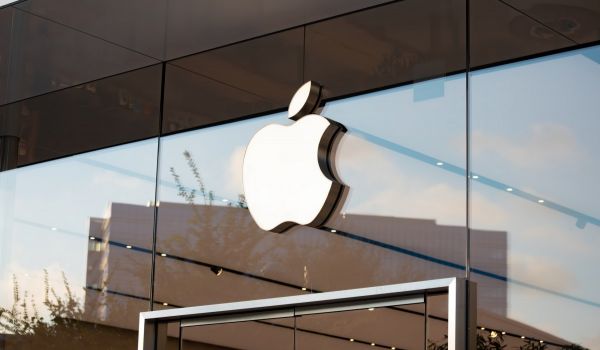The terms “Amazon” and “Tax increment financing,” the popular but frequently abused tool to subsidize development, in the same sentence tend to set off alarm bells. Shreveport, Louisiana and the county government of Caddo Parish aren’t even trying to hide it. Last month Caddo Parish Commissioners sealed the deal with a unanimous vote to create the “Amazon TIF District.”
“I had somebody telling me Amazon doesn’t need any more money, why would you do this to give them more money,” says Caddo Parish Commissioner Steven Jackson, who represents the area where the TIF is located. “They were ready to read the riot act toward Amazon.”
Good Jobs First, a watchdog group that tracks corporate subsidies, says Amazon has received $669 million in state and local tax abatements, rebates, and workforce development funds in 2021. The watchdog group says Amazon has received at least $4.1 billion in state and local economic development subsidies since 2000 — including many TIFs.
It’s not that Amazon is not getting any subsidies for its planned fulfillment facility in north Shreveport. In a separate agreement, both Caddo Parish and the City of Shreveport have agreed to forgo any local property tax revenue from the new Amazon facility under construction in Jackson’s district — though Amazon has agreed to pay any amounts that would have gone to the local school district and the police departments, according to Jackson. The true amount of that local subsidy can’t really be known until later, when annual property tax bills show how much Amazon would have paid.
But the “Amazon TIF,” despite its name, is not an additional subsidy for the retail behemoth. The Amazon TIF dollars won’t be going to Amazon, nor to support the construction of its new facility in north Shreveport. Instead, they’ll be funnelled into projects benefiting the areas surrounding the facility, which are predominantly Black and largely disinvested communities hit hard by decades of de-industrialization. It’s a way for the city to ensure that the community that will be most affected by Amazon’s arrival gets at least some benefit from it.
“When I was a little girl growing up in this area, this was our business district, where our stores were,” says Shreveport City Council Member Tabatha Taylor, who now represents the area, also known as the North Market commercial corridor. “North Market was a place you wanted to go. And you want that back again. If Amazon was here but there was not a TIF district, I would be asking the question as a council member, what’s going to be done for North Market?”
There are three kinds of people in the world. Those who don’t know what TIF is, those who know TIF and love it as a local tool for economic development, and those who know it and despise it as corporate welfare or as a slush fund for local politicians to dole out favors or to punish political opponents.
TIF works a little bit differently everywhere, governed by state laws, but it generally works by authorizing local governments to set a threshold on local taxes collected from an area where property values and therefore property tax assessments are expected to rise due to new development. Any tax revenues from the TIF district above that threshold get set aside to subsidize projects within the TIF district or sometimes nearby, based on the TIF district’s spending rules.
Oftentimes, a TIF district can issue its own municipal bonds to fund projects that meet its spending rules up front instead of waiting for TIF funds to accumulate, using the TIF revenues to repay the bonds over time. Local politicians love it because it can make it seem like economic development is paying for itself.
The exact spending rules around TIF can differ district by district, even within the same state. Those rules are often the foundation for abuse or corruption — like in Chicago, which has more TIF districts than the rest of the ten most populous cities in the country combined.
“If you talk to people in city government they’ll say they have a plan for TIF funds but it’s not quite formalized maybe,” says David Merriman, Interim Dean of the College of Urban Planning and Public Affairs (CUPPA) at the University of Illinois-Chicago. “Critics would say the mayor is using TIFs as a slush fund. There’s probably some truth to both sides.”
Merriman also authored a 2018 study of TIF for the Lincoln Institute of Land Policy, one of the few national studies of TIF. He worries that ceding too much power to the mayor over TIF dollars undercuts the democratic process.
“Many times TIF spending gets decided in the bureaucracy without a lot of public discussion,” Merriman says. “People defending the process will say “well, city council approves the TIF and you don’t want the city council micro-managing everything.”
The new Amazon TIF in Shreveport does not give the mayor any formal control over its dollars. Instead, it will be “micro-managed,” in the sense that the Caddo Parish Commission has designated itself to be the governing body of the Amazon TIF District. Jackson says he expects that Shreveport City Council will also get to vote on any project that the Amazon TIF funds.
The parish ordinance creating the Amazon TIF District also sets up an advisory committee, consisting of the Caddo Parish commissioner, city councilmember and parish school board member who represent the area, a resident or business owner of the area appointed jointly by the city and parish, and a representative from Amazon. A TIF district in Louisiana may raise funds from outside sources, and Jackson anticipates Amazon may be willing to contribute additional funds directly into the TIF district’s dedicated pot of money.
Jackson envisions the advisory committee will have the power to determine which projects get submitted to the council and parish commission for final approval. The exact details around the Amazon TIF District’s approval process and the spending rules still need to be negotiated over the next few weeks and codified into a “cooperative endeavor agreement,” as prescribed by the state law that empowers local governments to create TIF districts in Louisiana.
The idea to use Louisiana’s TIF district law like this came from Baton Rouge, which earlier this year also created its own TIF district surrounding a new Amazon facility along the city’s Florida Boulevard corridor — on a property that used to be the landmark Cortana Mall, once heralded as a symbol of progress and prosperity in the state capital, but now emblematic of the disinvestment and loss of economic activity for such places across the country.
“When they tore it down, it was a shell,” says Baton Rouge native Chris Tyson, the head of Build Baton Rouge, the city’s redevelopment authority. “It’s almost poetic that Amazon is coming, because it symbolizes the evolution of retail.”
Major economic development projects have long ignored many places like Shreveport’s North Market or Baton Rouge’s Florida Boulevard.
In Shreveport, Jackson says many laughed off the idea that any major development would come to his district back in 2016, when developers started initiating the process of prepping permits and zoning for the site where Amazon is now constructing its new fulfillment facility. The area around the site includes multiple public housing developments, a correctional facility, and a levy running along a bayou that wraps around the neighborhood. Even Taylor says she was surprised when she first heard Amazon had chosen the site in her district.
“When I drive down North Market now, you see Amazon going up, all the lights, and in my brain I begin to visualize the different things I want to see,” Taylor says.
But often, whether it’s Amazon or someone else — see FoxConn in Kenosha, Wisconsin — major economic development projects get subsidies to come to disinvested areas while promising jobs for people in the community or other benefits that never materialize.
“These situations often come and go, where there’s the promise of a benefit but that benefit is never realized,” Jackson says. “Now we’re saying let’s get it right.”
Tyson argues that these Amazon-related TIFs — which don’t actually subsidize the major economic development project at the heart of the project but rather future projects and programs around it — are one way that these communities can ensure that they have some power over who benefits from the economic activity around these projects.
It’s like a community benefit agreement, but without having to come back later to Amazon or whoever to make sure the benefits actually get funding. If the project succeeds and property values go up or new sales taxes start flowing in the area, the area is guaranteed a slice of the dollars generated.
But even with this kind of TIF in place, process still matters.
“That’s why in these instances you have to have a community-led plan,” Tyson says. “If you do that well you can foresee where you might potentially have maldistribution of resources and opportunities and the plan should account for that, should account for current composition of neighborhoods and their needs and account for those needs. I would argue you have a greater risk of displacement and maldistribution of resources and benefits when you don’t have a plan that is community-led, community-centered and community-informed.”
Tyson says the first priority for the new TIF in Baton Rouge is to fund a community-led process to come up with a master plan for the entire corridor area — guiding investments into the area by future generations of policymakers, developers and bankers. The way it has been structured, the Florida Boulevard TIF itself is projected to generate only $1.5 million until it expires in five years, so it would need to influence other revenue streams beyond that.
“Nothing exists in a state of nature,” Tyson says. “All of this is a result of good planning, bad planning or the failure to plan altogether. In other cities where we see these impacts and these burdens being constantly faced by mostly low-income people of color, there was an alternative that wasn’t chosen. That was a choice. There’s always another choice.”
This article is part of The Bottom Line, a series exploring scalable solutions for problems related to affordability, inclusive economic growth and access to capital. Click here to subscribe to our Bottom Line newsletter.

Oscar is Next City's senior economic justice correspondent. He previously served as Next City’s editor from 2018-2019, and was a Next City Equitable Cities Fellow from 2015-2016. Since 2011, Oscar has covered community development finance, community banking, impact investing, economic development, housing and more for media outlets such as Shelterforce, B Magazine, Impact Alpha and Fast Company.
Follow Oscar .(JavaScript must be enabled to view this email address)












